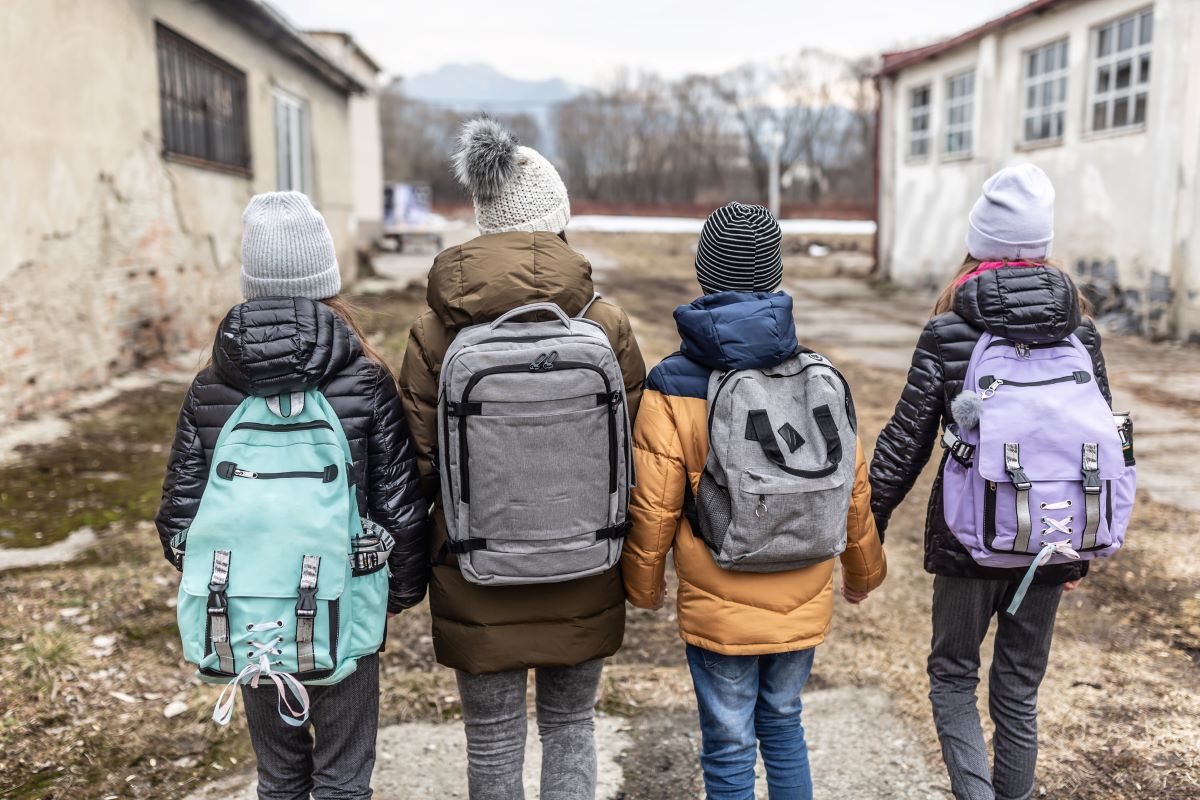As the U.S. recovers from a global pandemic, school districts are scrambling to help students and teachers who find themselves facing homelessness.
According to data from the U.S. Department of Education, almost 1.1 million students identified as “homeless” under the McKinney Vento Act during the 2020-2021 school year, representing a 14% decline from the previous year. People who meet this definition are those who live in unstable living conditions like hotels, homeless shelters, and vehicles because of economic hardship.
The McKinney Vento Act is designed to ensure that all students have equal opportunities to attend school, regardless of their socioeconomic status.
School districts across the country are increasing services to help families facing housing instability and lower barriers to access to services and support for students in these households. This comes when several local school districts face the dual threat of teacher shortages and political pressure to prioritize curriculums over social services.
“There is help out there… no matter how bad the situation looks, if you turn to your schools, to the community, there is help out there,” Christina Bretton-Stewart, a mother of four from the south side of Chicago who recently exited homelessness because of an intervention from local school districts on the south side of Chicago, told NBC News 5.
Schools are often the last line of defense for families who are slipping into homelessness. They can act as childcare centers, offer free food, and transportation, and provide internet access to working-age students and their parents. They can also provide pathways to services for households with homeless students who don’t qualify for public housing assistance.
Federal data shows that roughly 85% of families with students identified as homeless in 2020-2021 did not qualify for such benefits.
Since the pandemic began, some school districts like Community Consolidated Schools District 168 in southern Chicago have expanded the services they offer families at risk of experiencing homelessness. CCSD 168 recently began connecting vulnerable families with the nonprofit South Suburban PADS, an organization that provides emergency shelter and personal finance services.
In Des Moines, Iowa, the local public school system recently increased its staff of homeless liaison professionals to 70.
Homeless liaisons are school staffers tasked with identifying students experiencing homelessness and connecting them with the necessary services. The district also offers laundry services and the Food Bank of Iowa stocks food pantries at local schools. Some Des Moines-area schools like Hoover High School and the Kurtz Opportunity Center also have primary care services on campus.
The increase in liaisons comes as the number of students experiencing homelessness in the DMPS system climbed to 1,072 in 2022, according to the local WHO13 news station. Another 140 students have been identified since January 1, 2023. Altogether, the number of students facing homelessness is larger than the enrollment levels at 200 of Iowa’s 327 school districts, WHO13 reported.
Tayli Abel, a case manager and liaison at DMPS, told WHO13 that the success of these programs really “boils down to having relationships between schools and families and making sure we are doing our best to support them right where they are with dignity and respect and know we want to support that whole child approach.”
States like Washington have also stepped in to help local school districts in their efforts to identify homeless students. In 2016, Washington lawmakers passed a bill that gave school districts more funding to identify students experiencing homelessness and connect them with services.
An evaluation of the program by Building Changes, a nonprofit advocacy organization, found that 67% of program participants between 2020 and 2021 found stable housing. It only cost the state about $460,000 in grant funding, according to The Hechinger Report. Participants could spend their money on rent, landlord fees, and move-in costs.
But students sometimes aren’t the only ones at school experiencing homelessness.
Teachers in the Metro Nashville Public Schools system in Tennessee recently told their local school board that there are teachers facing housing instability in some metro-area schools, local news station FOX 17 reported.
“How effective or efficient can a homeless teacher be?” one teacher asked the board as MNPS advocated for raising teacher pay district-wide. “What about one who commutes two hours to and from work because they don’t make enough money to live where they work? How effective do you think teachers are who cannot afford to join their union? This must be rectified immediately by dividing the fund set aside for teachers who are never hired to do those of us who did the work this year.”
How You Can Help
The pandemic proved that we need to rethink housing in the U.S. It also proved that providing additional support and protections for vulnerable renters and households with students facing housing instability worked.
That’s why we need you to contact your officials and representatives. Tell them you support keeping many of the pandemic-related aid programs in place for future use. They have proven effective at keeping people housed, which is the first step to ending homelessness.













